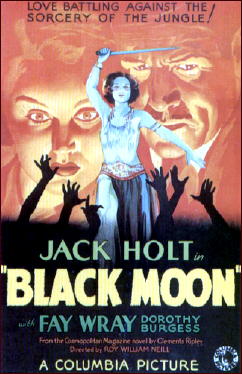November 2013
Monthly Archive
Thu 7 Nov 2013
THE ARMCHAIR REVIEWER
Allen J. Hubin
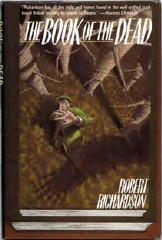
ROBERT RICHARDSON – The Book of the Dead. St. Martin’s Press, hardcover, 1989. First published in the UK by Gollancz, hardcover, 1989.
The third of Robert Richardson’s novels about playwright and occasional sleuth Auguste Maltravers is The Book of the Dead. Here Maltravers is guesting in the countryside when a sixty-ish gentleman, widely respected and married to a habitually unfaithful young wife, is murdered.
The man had in his safe an unusual treasure — an authentic and unpublished Sherlock Holmes story by Arthur Conan Doyle. This Sherlockian tale — [itself] not to me very impressive — is fully recounted within Richardson’s narrative, and provides Maltravers with some dangerous clues to whodunit.
Pleasant and devious story: the author had me confidently looking at the wrong person.
— Reprinted from The MYSTERY FANcier,
Vol. 12, No. 4, Fall 1990.
The Augustus Maltravers series —
The Latimer Mercy, 1985.
Bellringer Street, 1988.
The Book of the Dead, 1989.
The Dying of the Light, 1990.
Sleeping in the Blood, 1991. US title: Murder in Waiting.
The Lazarus Tree, 1992.
Wed 6 Nov 2013
Posted by Steve under
Reviews[3] Comments
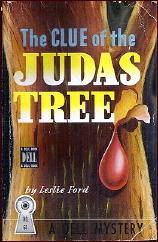
LESLIE FORD — The Clue of the Judas Tree. Dell #61, mapback edition, no date [1944]. First published by Farrar & Rinehart, hardcover, 1933. Also reprinted several times by Popular Library in the 1950s and 60s.
In several ways it’s hard to believe this book was written almost fifty years ago. The writing is remarkably fresh and relevant, even if the characters and the setting are out of the pages of history, if not history books, per se.
For example, the Crash of Wall Street in 1929 is still very much on everyone’s mind when it comes to matters financial, and the person who is the immediate suspect when financier Duncan Trent is found murdered is a shell-shock victim of World War I.
“Psychology” is an important ingredient in this early cross between a gothicky novel overwhelmed with apprehension and a strictly-playing-it-by-the-clues detective story, and so is romance.
The ending is unusually cluttered, but then perhaps it had to be to explain away all that had happened. Dashiell Hammett, one suspects, would not have had patience with a story like this, nor with the sort of fantasy world it takes place in, but it’s a branch of the detective novel that certainly seemed to blossom about the same time as The Maltese Falcon. This book is not still in print, but it could be — and its descendants, either direct or indirect, certainly are.
Rating: B minus
— Reprinted from The MYSTERY FANcier, Vol. 6, No. 3, May-June 1982 (slightly revised).
[UPDATE] 11-06-13. I do not remember reading this book at all. I have only this review to remind me that at one time I did. I see that I did not mention the detective of record, one Lt. Joe Kelly, who also appeared in Murder in Maryland (Farrar, 1932). Ford’s most frequently used series characters, Grace Latham and Colonel John Primrose, did not begin their fictional careers until 1937.
Wed 6 Nov 2013
THE BACKWARD REVIEWER
William F. Deeck
LYNN BROCK – The Kink. Harper and Brothers, US, hardcover, 1927. First published in the UK by Collins, hardcover, 1927, as Colonel Gore’s Third Case.
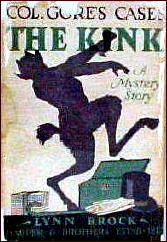
Lt.-Col. Wyckham Gore, D.S.O., senior partner of Gore & Talley, Confidential Agents, and his firm have failed to find a missing husband and a missing brother for two clients. One of the missing men turns up In a nursing home, having had, so he says, an accident necessitating the amputation of an arm; he is also missing a significant part of one ear and almost all of his nerve.
When the Hon. Mrs. Ronayne, whose name had appeared in connection with both mysterious disappearances, calls upon Gore to begin a constant surveillance of her husband, a famous Irish poet who may be involved with the IRA, but does not say why she wants his movements watched, Gore’s interest is piqued.
He is even more intrigued when her father, Lord Haviland, former Prime Minister, asks him to investigate the theft of what would seem to be some fairly insignificant items from his study, with the peer’s daughter and the poet both suspects.
As Gore begins his investigation, he meets other members of the family and discovers that they all are more than a bit peculiar, as are some of the servants. Pornographic movies and orgies would seem to be the worst of it, but then someone is brutally murdered.
Gore is a moderately interesting character, with a dry wit that should have been more in evidence, and a slightly more than adequate investigator. He gets things straightened out, at the risk of his life, in a rather complex but not particularly engrossing case.
— From The MYSTERY FANcier, Vol. 10, No. 1, Winter 1988.
The Colonel Wyckham Gore series —
The Deductions of Colonel Gore (n.) Collins 1924; Harper, US, 1925.
Colonel Gore’s Second Case (n.) Collins 1925; Harper, US, 1926.
Colonel Gore’s Third Case (n.) Collins 1927; reprinted in the US as The Kink, Harper, 1927.
The Slip-Carriage Mystery (n.) Collins 1928; Harper, US, 1928.
The Mendip Mystery (n.) Collins 1929; reprinted in the US as Murder at the Inn, Harper, 1929.
Q.E.D. (n.) Collins 1930; reprinted in the US as Murder on the Bridge, Harper, 1930.
The Stoat (n.) Collins 1940 [no US edition]
Under his Lynn Brock pen name, Alister McAllister (1877-1943) also wrote three books about Sgt. Venn, none of which have been published in the US, and two stand-alone mysteries. He also wrote two crime novels as by Anthony Wharton.
Mon 4 Nov 2013
Reviewed by
CAPTAIN FRANK CUNNINGHAM:
BERNARD CAPES – The Skeleton Key. Collins, UK, hardcover, 1919. US title: The Mystery of the Skeleton Key. Doran, hardcover, 1918. Also available in several current POD editions, and can be read online at archive.org.
If Hugh had returned from hunting by another path, or if he had left his gun behind him, or if one could have told just when the shot was heard, perhaps the murder of beautiful Annie Evans might have been cleared up without so much effort on the part of the famous Sergeant Ridgeway from Scotland Yard, or so much mutual suspicion on the part of the various guests assembled at the Hall.
Baron Le Sage of doubtful fame might have gone on playing chess, and pretty Audrey’s love affairs might not have become so tangled. But it’s just as well as it is, perhaps, for the result of all these complications is a thoroughly exciting detective story.
— Reprinted from Black Mask magazine, August 1920.
Biographic Note: From Capes’ Wikipedia page:
“Capes was a prolific Victorian author, publishing more than forty volumes – romances, mysteries, poetry, history – together with many articles for the magazines of the day. His early writing career was as a journalist, later becoming editor of a paper called The Theatre, which was well known in late nineteenth century London. Other magazines for which Capes wrote included Blackwood’s, Butterfly, Cassell’s, Cornhill Magazine, Hutton’s Magazine, Illustrated London News, Lippincott’s, Macmillan’s Magazine, Literature, New Witness, Pall Mall Magazine, Pearson’s Magazine, The Idler, The New Weekly, and The Queen.”
Mon 4 Nov 2013
REVIEWED BY DAN STUMPF:
CLEMENTS RIPLEY – Black Moon. Harcourt Brace & Co, hardcover, 1933.
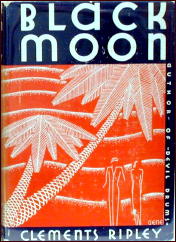
BLACK MOON. Columbia, 1934. Jack Holt, Fay Wray, Dorothy Burgess, Cora Sue Collins, Arnold Korff, Clarence Muse. Based on the novel by Clements Ripley. Director: Roy William Neill.
Clements Ripley’s Black Moon amounts to very little really, but it has its moments. Steven Lane is one of those wealthy, athletic, handsome and single young men who crop up regularly in adventure stories of that day, and as this one opens he’s on his way to an island somewhere south of Haiti to marry Amalia Perez, your typical fiery Latin beauty, who mysteriously returned to the tiny isle of her birth just as they were getting serious about each other back in New York.
Lane is barely past the first page when he gets a bit of foreshadowing from a cagey servant — a black man named “Lunch†whose depiction is regrettably condescending — and it’s not much later that he encounters Amalia’s uncle, Dr. Perez, who owns the island (and the people on it, he presumes) and looks over his niece’s interests with a solicitude bordering on the pathological.
Amalia herself appears not much later, but she seems so remote and disinterested that Lane wonders how serious they were about each other to begin with. Fortunately, there’s a perky level-headed young American girl around on the island and the veteran reader of this sort of thing can see their attraction coming several chapters before they do.
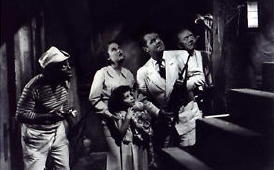
The plot develops apace, with unrest among the natives, sinister drums, mysterious disappearances and even more mysterious antics from the sultry Amalia, who turns out to be a High Priestess of the local Voodoo cult, bent on human sacrifice.
Well we’ve all dated girls like that from time to time, but oddly enough it is not Amalia who emerges as the villain of the piece but her uncle, the good doctor whose fine manners mask a control freak on the order of Count Zaroff, gradually spinning out of bounds as he countenances murder, cover-up and even cold-blooded savagery in the name of tradition and family pride—all with the suave graciousness one expects from baddies in pulp fiction.
And even more surprising, the racially stereotyped Lunch starts taking on more and more of the heroics, performing handy bits of business like chewing through ropes and even a bit of convenient killing that our nominal hero is just too decent a chap to commit. Before we get to the end, Ripley has treated us to a fine panoply of thrills, including capture by natives, murder on the garden path, black magic rites and a running gun battle across the island by hero and villain with the natives in hot pursuit of them both. Possibly not the most intelligent book you could pick, but undeniably lively.

Black Moon had the good fortune to be filmed by Roy William Neil at Columbia in 1934, and it’s really a crackerjack little film, handled by Neill – he of the Universal / Rathbone / Holmes movies — with his usual flair for atmosphere and pace. Dorothy Burgess plays the mysterious Latina, but as the film opens she’s already married to Lane, who has become a solid businessman, played by square-jawed and middle-aged Jack Holt.
But Burgess is yearning to return to the Caribbean island of her birth, and Holt lets her take their daughter and his secretary (Faye Wray) down there while he wraps up some business stateside, and in his absence things in the tropics go quickly hellward as Dorothy recalls her upbringing and realizes she was raised to be the priestess of a local voodoo cult – a destiny she will embrace even if it becomes the spark of a bloody religious uprising.
This has it all: steamy tropical suspense, bursts of action, and those incessant drums pounding-in-my-head-night-and-day-Oh-why-won’t-they-stop? Neill, who brought elegance to predestined piffle like Frankenstein Meets the Wolfman, directs with real feeling for the lurid essence of the material, and the result is a splendidly watchable little film I can highly recommend.
And though there’s no way to segue smoothly into this, I should add that Clarence Muse, one of the few minority performers of his day to consistently invest his roles with intelligence and dignity, brings real depth and feeling to the role of “Lunch†lifting the character out of the rut most black-servants-in-the-movies found themselves stuck in.
Sun 3 Nov 2013
Posted by Steve under
Reviews1 Comment
“Two Poirot Stories That Never Made the Cutâ€
by Mike Tooney.
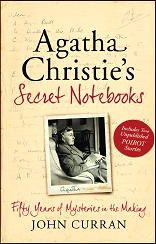
Previously on Mystery*File, Ray O’Leary did a fine review of John Curran’s Agatha Christie’s Secret Notebooks, and you’re urged to read it.
In his book, Curran includes two previously unpublished short stories featuring Hercule Poirot and speculates about when and why these tales were never published. In his review, O’Leary suggests equally valid speculations.
(1) “The Capture of Cerberusâ€
Readers might like to compare this version dating from 1939 with the one that finally saw print in 1947. As Curran notes, this story has a “complicated history.â€
In Geneva, Poirot happens to encounter an old nemesis-turned-friend, Countess Vera Rossakoff. Predictably, there is a male admirer trailing in her wake, Herr Doktor Keiserbach; but it would seem that Keiserbach has been using the countess as a means of meeting the little Belgian.
Keiserbach later tells Poirot his true identity, and entreats the detective to help clear his murdered son’s name for having assassinated a popular but controversial European politician, a double for Adolf Hitler.
In true Christie fashion, doubles figure prominently in the plot, with Poirot contriving an intricate plan to find a dead man and convince him to come back to life, while at the same time vindicating Keiserbach’s son.
Last time we checked, you could read a portion of “Cerberus†online here. Presumably Christie’s revised version, which differs radically from the original, has somehow recently been adapted for the television series, Agatha Christie’s Poirot.
(2) “The Incident of the Dog’s Ballâ€
Based on surer evidence than is available for “Cerberus,†Curran surmises that this story “was written in 1933 and never offered for publication but, instead, transformed, in 1935/36, into the novel Dumb Witness.†With the transformation, Christie changed both the murderer and the solution.
Captain Hastings narrates the story. When Poirot receives an almost incoherent letter from an elderly woman, his little grey cells are set aquiver. It being hot and sultry in London, a dubious Hastings nevertheless welcomes the chance to quit the city for the more tolerable hinterlands when Poirot suggests they find out more about this woman.
Not long after arriving in Little Hemel, Poirot is crestfallen to learn of the old lady’s death, and he finds it inexplicable that she should will her estate, not to her closest relatives, but to a paid companion who is, let’s be honest, a little flaky.
The little grey cells inform the Belgian sleuth that all is not as it appears to be in this affair, and a series of seemingly unrelated clues — including a toy ball — lead him to conclude the elderly woman was murdered.
Bob, the titular canine, comes by implication to be a murder suspect himself; and the fact that the village doctor can’t smell most odors will help the real murderer escape suspicion — but only for a while, because the indefatigable Hercule Poirot is on the case.
Christie’s final version of this story was filmed for TV as “Dumb Witness” in 1996.
Sat 2 Nov 2013
DEATH NOTED: Gérard de Villiers.
From The Telegraph (UK):
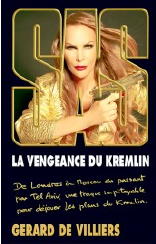
http://www.telegraph.co.uk/news/worldnews/europe/france/10421552/French-spy-novelist-Gerard-de-Villiers-dies.html
“Intelligence chiefs called him the best-informed spy novelist on the planet for predicting real-life James Bond-style hits before they happened.
“He sold up to 150 million copies of his 200-tome SAS pulp-fiction series, in which hero Malko Linge, an Austrian aristocrat, carries out freelance spy operations around the world for the CIA to pay for the upkeep of his castle.
“But Gérard de Villiers died on Thursday [October 31] aged 83 still nursing two regrets: his lack of recognition in his home country and failure to have his books turned into Hollywood blockbusters to rival the Bond films.
“France’s literary establishment were appalled at the author’s hard-Right views and turned their noses up at his lurid tomes, with their trademark gun-toting femmes fatales, cardboard characters and obligatory sex scenes.
“But his geopolitical insights, based on information gleaned from his vast network of intelligence officials, diplomats and journalists, were often eerily prescient….”
It has proven difficult to find a complete list of de Villiers’ work online, but on the Spy Guys and Gals website I have found the following, which if the article above is correct, is almost complete:
List Of French Titles
Nr French Title (Translation) – Year Published In France
1 Sas à Istanbul (Sas In Istanbul) – 1965
2 Sas Contre Cia (Sas Against Cia) – 1965
3 Operation Apocalypse (Operation Apocalypse) – 1965
4 Samba Pour Sas (Samba For Sas) – 1966
5 Rendez-Vous à San Francisco (Go To San Francisco) – 1966
6 Le Dossier Kennedy (The Kennedy File) – 1967
7 Broie Du Noir (Broods) – 1967
8 Sas Aux CaraïBes (Sas In The Caribbean) – 1967
9 Sas à L’Ouest De Jeruzalem (Sas West Of Jeruzalem) – 1968
10 L’Or De La RivièRe Kwaï (Gold On The River Kwai) – 1968
11 Magie Noire à New York (Black Magic In New York) – 1968
12 Les Trois Veuves De Hong Kong (The Three Widows Of Hong Kong) – 1968
13 L’Abominable Sirene (The Ugly Mermaid) – 1969
14 Les Pendus De Bagdad (The Hanged In Baghdad) – 1969
15 La PanthèRe D’ Hollywood (The Panther Of Hollywood) – 1969
16 Escale à Pago-Pago (Stopover In Pago Pago) – 1969
17 Amok à Bali (Amok In Bali) – 1970
18 Que Viva Guevara (Que Viva Guevara) – 1970
19 Cyclone à Onu (Cyclone To Un) – 1970
20 Mission à Saigon (Mission In Saigon) – 1970
21 Le Bal De La Comtesse Adler (The Ball Of The Countess Adler) – 1971
22 Les Parias De Ceylon (The Pariahs Of Ceylon) – 1971
23 Massacre à Amman (Massacre In Amman) – 1971
24 Requiem Pour Tontons Macoutes (Requiem For Tonton Macoutes) – 1971
25 L’Homme De Kabul (The Man From Kabul) – 1972
26 Mort à Beyrouth (Death In Beirut) – 1972
27 Safari à La Paz (Safari In La Paz) – 1972
28 L’HéRoïNe De Vientiane (The Heroine Of Vientiane) – 1972
29 Berlin, Check-Point Charlie (Berlin, Check-Point Charlie) – 1973
30 Mourir Pour Zanzibar (Dying For Zanzibar) – 1973
31 L’Ange De Montevideo (The Angel Of Montevideo) – 1973
32 Murder Inc., Las Vegas (Murder Inc., Las Vegas) – 1973
33 Rendez-Vous à Boris Gleb (Visit Boris Gleb) – 1974
34 Kill Henry Kissinger (Kill Henry Kissinger) – 1974
35 Roulette Cambodgienne (Roulette Cambodian) – 1974
36 Furie à Belfast (Fury In Belfast) – 1974
37 Gu̻Pier En Angola (Bee In Angola) Р1975
38 Les Otages De Tokio (The Hostages Of Tokio) – 1975
39 L’Orde Regne A Santiago (The Orde Reign In Santiago) – 1975
40 Les Sorciers Du Tage (Wizards Of The Tagus) – 1975
41 Embargo (Embargo) – 1976
42 Le Disparu De Singapore (The Disappeared From Singapore) – 1976
43 Compte à Rebours En Rhodesie (Countdown In Rhodesia) – 1976
44 Meurtre à AthèNes (Murder In Athens) – 1976
45 Le Tr̩Sor Du N̩Gus (The Treasure Of The Negus) Р1977
46 Protection Pour Teddy Bear (Protection For Teddy Bear) – 1977
47 Mission Impossible En Somalie (Impossible Mission In Somalia) – 1977
48 Marathon à Spanish Harlem (Marathon Adverse Harlem) – 1977
49 Nauffrage Aux Seychelles (Nauffrage In Seychelles) – 1978
50 La Printemps De Varsovie (The Spring Of Warsaw) – 1978
51 Le Gardien D’IsraëL (The Guardian Of Israel) – 1978
52 Panique Au ZaïRe (Panic In Zaire) – 1978
53 Croisade à Managua (Crusade In Managua) – 1979
54 Voir Malte Et Mourir (See Malta And Die) – 1979
55 Shanghai Express (Shanghai Express) – 1979
56 Op̩Ration Matador (Operation Matador) Р1979
57 Duel à Barranquilla (Duel In Barranquilla) – 1980
58 PièGe à Budapest (Trap Budapest) – 1980
59 Carnage à Abu Dhabi (Carnage In Abu Dhabi) – 1980
60 Terreur à San Salvador (Terror In San Salvador) – 1980
61 Le Complot Du Caire (The Plot Of Cairo) – 1981
62 Vengeance Romaine (Roman Revenge) – 1981
63 Des Armes Pour Khartoum (Weapons To Khartoum) – 1981
64 Tornade Sur Manille (Tornado In Manila) – 1981
65 Le Fugitif De Hambourg (The Fugitive From Hamburg) – 1982
66 Objectif Reagan (Objective Reagan) – 1982
67 Rouge Grenade (Red Grenade) – 1982
68 Commando Sur Tunis (Commando In Tunis) – 1982
69 Le Tueur De Miami (The Killer In Miami) – 1983
70 La Fili̬Re Bulgare (The Bulgarian Industry) Р1983
71 Aventure Au Surinam (Adventure In Suriname) – 1983
72 Embuscade à La Khyber Pass (Ambush At The Khyber Pass) – 1983
73 Le Vol 007 Ne R̩Pond Plus (Flight 007 No Longer Meets) Р1984
74 Les Fous De Baalbek (Fools Of Baalbek) – 1984
75 Les EnragéS D’Amsterdam (The Rabid Amsterdam) – 1984
76 Putsch à Ouagadougou (Coup In Ouagadougou) – 1984
77 La Blonde De Pretoria (The Blonde Pretoria) – 1985
78 La Veuve De L’Ayatollah (The Widow Of Ayatollah) – 1985
79 Chasse à L’Homme Au PéRou (Manhunt In Peru) – 1985
80 L’Affaire Kirsanov (The Case Kirsanov) – 1985
81 Mort à Gandhi (Death To Gandhi) – 1986
82 Danse Macabre à Belgrade (Dance Of Death In Belgrade) – 1986
83 Coup D’Etat Au Yemen (Coup In Yemen) – 1986
84 Le Plan Nasser (The Plan Nasser) – 1986
85 Embrouilles à Panama (Entanglements In Panama) – 1987
86 La Madone De Stockholm (The Madonna Of Stockholm) – 1987
87 L’Otage D’Oman (The Hostage Of Oman) – 1987
88 Escale à Gibraltar (Stop In Gibraltar) – 1987
89 Aventure En Sierra Leone (Adventure In Sierra Leone) – 1988
90 La Taupe De Langley (Langley’S Mole) – 1988
91 Les Amazones De Pyongyang (The Amazons Of Pyongyang) – 1988
92 Les Tueurs De Bruxelles (The Killers Of Brussels) – 1988
93 Visa Pour Cuba (Visa For Cuba) – 1989
94 Arnaque à Brunei (Brunei Scam) – 1989
95 Loi Martiale à Kaboul (Martial Law In Kabul) – 1989
96 L’ Inconnu De Leningrad (The Unknown Leningrad) – 1989
97 Cauchemar En Colombie (Nightmare In Colombia) – 1989
98 Croisade En Birmanie (Crusade In Burma) – 1990
99 Mission à Mouscou (Mission Mouscou) – 1990
100 Les Canons De Bagdad (The Guns Of Baghdad) – 1990
101 La Piste De Brazzaville (The Track Of Brazzaville) – 1991
102 La Solution Rouge (The Red Solution) – 1991
103 La Vengeance De Saddam Hussein (The Vengeance Of Saddam Hussein) – 1991
104 Manip à Zagreb (Manip In Zagreb) – 1992
105 Kgb Contre Kgb (Kgb Kgb Against) – 1992
106 Le Disparus De Canaries (The Missing Canary) – 1992
107 Alerte Plutonium (Alert Plutonium) – 1992
108 Coup D’éTat à Tripoli (Coup In Tripoli) – 1992
109 Mission Sarajevo (Mission Sarajevo) – 1993
110 Tuez Rigoberta Menchu (Kill Rigoberta Menchu) – 1993
111 Au Nom D’Allah (The Name Of Allah) – 1993
112 Vengeance à Beyrouth (Vengeance In Beirut) – 1993
113 Les Trompettes De J̩Richo (The Trumpets Of Jericho) Р1994
114 L’Or De Moscou (Gold In Moscow) – 1994
115 Les CroiséS De L’Apartheid (The Crusaders Of Apartheid) – 1994
116 La Traque De Carlos (The Hunt For Carlos) – 1994
117 Tuerie à Marrakech (Killing In Marrakech) – 1994
118 L’Otage Du Triangle D’Or (The Hostage Of The Golden Triangle) – 1995
119 Le Cartel De S̩Bastopol (The Cartel Of Sevastopol) Р1995
120 Ramenez-Moi La TêTe D’El Coyote (Bring Me The Head Of El Coyote) – 1995
121 La R̩Solution 687 (Resolution 687) Р1996
122 Op̩Ration Lucifer (Operation Lucifer) Р1996
123 Vengeance Tch̩Tch̬Ne (Chechen Revenge) Р1996
124 Tu Tueras Ton Prochain (You Kill Your Neighbor) – 1996
125 Vengez Le Vol 800 (Avenge The Flight 800) – 1997
126 Une Lettre Pour La Maison-Blanche (A Letter To The White House) – 1997
127 Hong Kong Express (Hong Kong Express) – 1997
128 ZaïRe Adieu (Zaire Farewell) – 1997
129 La Manipulation Yggdrasil (Handling Yggdrasil) – 1998
130 Mortelle JamaïQue (Lethal Jamaica) – 1998
131 La Peste Noire De Bagdad (The Black Death In Baghdad) – 1998
132 L’Espion Du Vatican (The Spy In The Vatican) – 1998
133 Albanie Mission Impossible (Albania Mission Impossible) – 1999
134 La Source Yahalom (The Source Yahalom) – 1999
135 Sas Contre P.K.K. (Against Sas P.K.K.) – 1999
136 Bombes Sur Belgrade (Bombs On Belgrade) – 1999
137 La Piste Du Kremlin (The Track Of The Kremlin) – 2000
138 L’Amour Fou Du Colonel Chang (L’Amour Fou Colonel Chang) – 2000
139 Djihad (Jihad) – 2001
140 Enqu̻Te Sur Un G̩Nocide (Investigation Of Genocide) Р2001
141 L’Otage De Jolo (The Jolo Hostage) – 2001
142 Tuez Le Pape (Kill The Pope) – 2001
143 Armageddon (Armageddon) – 2002
144 Li Sha-Tin Doit Mourir (Li-Sha Tin To Die) – 2002
145 Le Roi Fou Du N̩Pal (The Mad King Of Nepal) Р2002
146 Le Sabre De Bin Laden (Sword Of Bin Laden) – 2002
147 La Manip Du Karin A (The Manipulation Of The Karin A) – 2002
148 Bin Laden: La Traque (Bin Laden: The Hunt) – 2002
149 Le Parrain Du “17 Novembre†(The Sponsor Of The ‘November 17’) – 2003
150 Bagdad-Express (Baghdad Express) – 2003
151 L’Or D’Al-Qaida (L’Or Al-Qaeda) – 2003
152 Pacte Avec Le Diable (Pact With The Devil) – 2003
153 Ramenez-Les Vivants (Bring Them Back Alive) – 2004
154 Le R̩Seau Istanbul (Network Istanbul) Р2004
155 Le Jour De La Tcheka (The Day Of The Cheka) – 2004
156 La Connexion Saoudienne (The Saudi Connection) – 2004
157 Otages En Irak (Hostages In Iraq) – 2005
158 Tuez Iouchtchenko! (Yushchenko Kill!) – 2005
159 Mission: Cuba (Mission: Cuba) – 2005
160 Aurore Noire (Dawn Black) – 2005
161 Le Programme 111 (The Program 111) – 2006
162 Que La B̻Te Meure (The Animal Dies) Р2006
163 Le TréSor De Saddam : 1 (Saddam’S Treasure: A) – 2006
164 Le Tr̩Sor De Saddam : 2 (The Treasure Of Saddam: 2) Р2006
165 Le Dossier K. (The Dossier K.) – 2006
166 Rouge Liban (Red Lebanon) – 2006
167 Polonium 210 (Polonium 210) – 2007
168 Le Defecteur De Pyongyang (The Defectors From North Korea) – 2007
169 Le D̩Fecteur De Pyongyang, Tome 2 (The Defector From Pyongyang, Volume 2) Р2007
170 Otage Des Taliban (Taliban Hostage) – 2007
171 L’Agenda Kosovo (Agenda Kosovo) – 2008
172 Retour A Shangri-La (Back In Shangri-La) – 2008
173 Al-Qaida Attaque T.1 (Al-Qaida Attack, part 1) – 2008
174 Al-Qaida Attaque T.2 (Al-Qaida Attack, part 2) – 2008
175 Tuez Le Dalai Lama (Kill The Dalai Lama) – 2008
176 Le Printemps De Tbilissi (Spring In Tbilisi) – 2009
177 Pirates (Pirates) – 2009
178 La Bataille Des S-300 T.01 (The Battle Of The S-300, part 1) – 2009
179 La Bataille Des S-300 T.02 (The Battle Of The S-300, part 2) – 2009
180 Le pi̬ge de Bangkok (The Siege Of Bangkok) Р2009
181 La liste Hariri (Hariri’s List) – 2010
182 La filiere Suisse (The Swiss Chains) – 2010
183 Renegade, T.1 (Renegade, part 1) – 2010
184 Renegade, T.2 (Renegade, part 2) – 2010
185 F̩roce Guin̩e (Wild Guinea) Р2010
186 Le mątre des Hirondelles (The Master Of The Swallows) Р2011
187 Bienvenue à Nouakchott (Welcome To Nouakchott) – 2011
188 Rouge Dragon, T.1 (Red Dragon, part 1) – 2011
189 Rouge Dragon, T.2 (Red Dragon, part 2) – 2011
190 Ciudad Juarez (Juarez City) – 2011
Only a few of these have been translated into English. From Crime Fiction IV, by Allen J. Hubin (which is inclusive only through the year 2000):
DE VILLIERS, GERARD (1929-2013).
*The Angel of Vengeance (Pinnacle, 1974, pb) [Malko Linge; Uruguay] Translation of “L’Ange de Montevideo.†Paris, 1973.
*The Belfast Connection (Pinnacle, 1976, pb) [Malko Linge; Belfast, Northern Ireland] Translation of (?): “Furie a Belfast.†Paris, 1974.
*Black Magic in New York (NEL, 1970, pb) [Malko Linge; New York City, NY] U.S. title: Operation New York. Pinnacle, 1973. Translation of “Magie Noire a New York.†Paris, 1967.
*Checkpoint Charlie (Pinnacle, 1975, pb) [Malko Linge; Berlin] Translation of “Berlin: Check-Point Charlie.†Paris, 1973.
*The Countess and the Spy (Pinnacle, 1974, pb) [Malko Linge; Austria; Hungary] Translation of “Le Bol de la Comtesse Adler.†Paris, 1971.
*Death in Santiago (Pinnacle, 1976, pb) [Malko Linge; Chile] Translation of “L’Ordre Regne a Santiago.†Paris, 1975.
*Death on the River Kwai (Pinnacle, 1975, pb) [Malko Linge; Thailand] Translation of “L’Or de la Riviere Kwai.†Paris, 1968.
*A Game of Eyes Only (Medallion, 1986, hc) [Malko Linge; El Salvador] Translation of “Terreur au San Salvador.†Paris, 1981. Film: UGC, 1982, as S.A.S. San Salvator (scw: Gerard De Villiers; dir: Raoul Coutard).
*Hostage in Tokyo (Pinnacle, 1976, pb) [Malko Linge; Tokyo] Translation of “Les Ostages de Tokyo.†Paris, 1975.
*Kill Kissinger (Pinnacle, 1974, pb) [Malko Linge; Kuwait] Translation of “Kill Kissinger.†Paris, 1974.
*The Man from Kabul (Pinnacle, 1973, pb) [Malko Linge; Afghanistan] Translation of “L’Homme de Kabul.†Paris, 1971.
*Operation Apocalypse (NEL, 1970, pb) [Malko Linge] Translation of “Operation Apocalypse.†Paris, 1970.
_Operation New York (Pinnacle, 1973, pb) See: Black Magic in New York (NEL 1970).
*The Portuguese Defection (Pinnacle, 1976, pb) [Malko Linge; Portugal] Translation of “Les Sorcies du Trage.†Paris, 1975.
*Que Viva Guevara (Pinnacle, 1975, pb) [Malko Linge; Venezuela] Translation of “Que Viva Guevara.†Paris, 1970.
*Versus the C.I.A. (NEL, 1969, pb) [Malko Linge; Iran] Pinnacle, 1974. Translation of “Contra C.I.A.†Paris, 1965.
*West of Jerusalem (NEL, 1969, pb) [Malko Linge; Italy] Pinnacle, 1973. Translation of “A L’Ouest de Jerusalem.†Paris, 1967.
Fri 1 Nov 2013
Reviewed by DAVID L. VINEYARD:
STRYKER: FANFARE FOR A DEATH SCENE. Made-for-TV movie (busted pilot), 1964. Richard Egan, Viveca Lindfors, Burgess Meredith, Telly Savalas, J.D. Cannon, Tina Louise, Al Hirt, Edward Asner, King Deigh. Screenplay Marion Hargrove. Directed by Leslie Stevens.
John Styker (Richard Egan) is a wealthy industrialist, but once upon a time he was an operative of the OSS, G2, and later the CIA, and when the white phone in his modern office rings he answers, sent off on another mission for the ultra secret Provisional Bureau of Intelligence.
Professor George Bannerman (Burgess Meredith) holds all the knowledge of America’s most secret intelligence data in his head, and his head isn’t working right. When the staff at the sanitarium he is held in is poisoned using spotted hemlock, Bannerman escapes taking his beloved trumpet with him, and the hunt is on.
“When nine people are murdered using a poison that nobody’s used for a thousand years — well, that’s rather gaudy.”
J. D. Cannon and Edward Asner are agents of the PBI, but they don’t believe Stryker’s pet theory about the Golden Horde, a shadow government of descendants of the Mongol Khans led by the descendant of Genghis Khan himself, Ilchedai Khan (Telly Savalas) a jovial sadist, with his henchman Kingh Deigh and beautiful Circassian helper Tina Louise.
“Anytime in the Arabian Nights you read about a beautiful fair haired Asian girl she’s a Circassian.”
This jazzy spy pilot in the mode of Peter Gunn has a terrific score by Dominic Frontiere and is directed by Leslie Stevens, using many of the camera tricks of Stevens’ Outer Limits including a well shot karate battle between Egan and Deigh in a darkened room lighted only by slatted blinds.
The plot gallops along as Ilchedai Khan uses Stryker to find Bannerman, and Stryker keeps tabs on a famous classical trumpeter Reynaldo Mendel (Al Hirt) whom Bannerman idolizes, but Styker knows he’s being set up and even allows himself to be captured so he can learn more of Ichedai Khan’s plot.
“We have a saying. An intelligent enemy is better than a unintelligent friend.”
The story is fairly silly but fun, and the outre elements from Telly Savalas’s latter day Fu Manchu to Viveca Lindfors as sadistic imperial princess of the Mongol and Russian blood are pure Sax Rohmer with a dash of James Bond thrown in the mix. The sets, like those of The Outer Limits, make ample use of shadows and open spaces to give the thing a unique look for television.
“Your mind is so typically Occidental, capable of an infinite deviousness.”
A fairly imaginative effort with some bright tongue-n-cheek elements.
“Give him to me. I will have him stuck kicking into a velvet sack and trampled by wild horses.”
“You will do no such thing. Until we absolutely have to …”
It all builds to a fairly surprising ending as Styker tracks down Bannerman using a concert to lure his quarry and outwitting Ilchedai Khan — this time.
Like many unsold pilots this one is a study in what might have been, but stands alone as a fairly ambitious example of high concept nonsense. Meredith does well with no dialogue, in portraying a psychotic breakdown and comes to a spectacular end.
Fri 1 Nov 2013
Posted by Steve under
ReviewsNo Comments
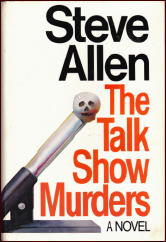
STEVE ALLEN – The Talk Show Murders. Delacorte Press, hardcover, 1982. Dell, paperback, 1983.
It so happens that I think Steve Allen is an unrecognized genius. If you take a look at the ratings of his last few television ventures, I think you’ll agree on at least half of that statement.
The fact remains that this is his twenty-fourth book, and some of them are a sight more serious than Bop Fables, which was his first. There was Ripoff: A Look at Corruption in America, for example, a factual expose of white collar crime in this country — not exactly what you’d expect to see as number one on the laugh parade.
This is his first mystery novel. [FOOTNOTE.] Being a celebrity of some renown, Steve Allen should expect to sell a few more copies of this book than would the author of your average whodunit detective story. I’m happy for Mr. Allen, but I’m caught in a quandary of mixed emotions, since the book is only marginally better than that same average whodunit detective story mentioned above.
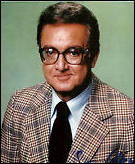
Naturally, the subject matter [talk show murders] is an ideal one. The first death occurs on Toni Tennille’s show, the second on Johnny Carson. Phil Donahue is next, followed by Dick Cavett, then a grand finale on The Merv Griffin Show.
Steve Allen no longer has a show to call his own — what a shame!- but he knows his way around backstage — and frontstage — and his capsule descriptions of the other hosts no longer his competition are the other reason you’ll read this book,
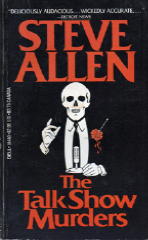
The first, of course, is the mystery. The sequence of killings quickly becomes a personal challenge aimed directly at Roger Dale, the private eye working on the case. Roger Dale is a PI with an eye for PR — public relations, that is. All of the victims are advance-guard members of the sexual revolution presumed to be sweeping the country, another clue for Dale to add to his PP of the killer — the psychological profile.
In the end, just as they always used to do, all of the suspects are gathered together in one room — in this case, the nation’s living room!– live and direct, as they always say, to find out who the guilty one is. It is the talk show to end all talk shows- and if it hadn’t worked, it probably would have.
As a detective-story writer, Allen does not play fair in the classical sense. Even Roger Dale himself is not sure whom he’ll name as the killer before he finally wrings a confession out of him/her while still on the air. There are no clues for the reader to eagerly snap up along the way.
The book is still nothing less than a huge amount of fun to read, which in this case has to be the number one criterion.
Rating: B.
— Reprinted from The MYSTERY FANcier, Vol. 6, No. 3, May-June 1982 (slightly revised). This review first appeared in the Hartford Courant.
FOOTNOTE: As it turns out (not too surprisingly, perhaps) Steve Allen did not actually write this book. The author responsible, in this case, was Walter J. Sheldon. The book must have been a success, saleswise, since there were nine more in the series, all written by Robert Westbrook.
I see that I did not mention that Steve Allen is actually a character in The Talk Show Murders — perhaps as the narrator — as he was in all of the additional ones. I do not know if PI Roger Dale ever showed up again. I do not believe I ever read any of the later entries in the series.
« Previous Page






